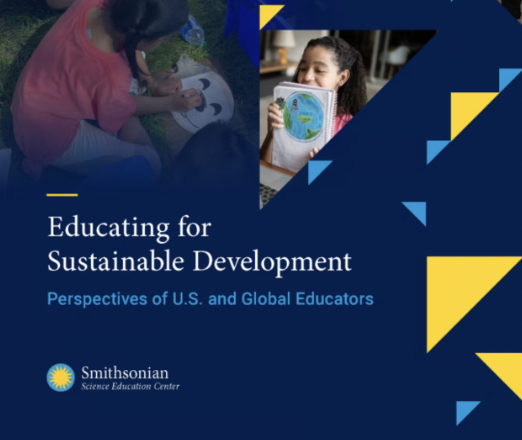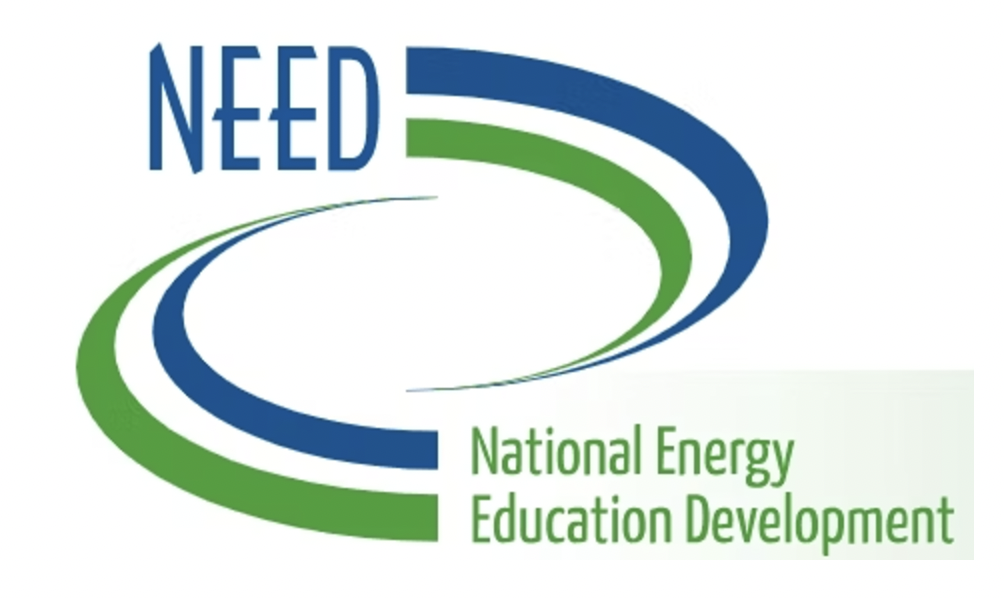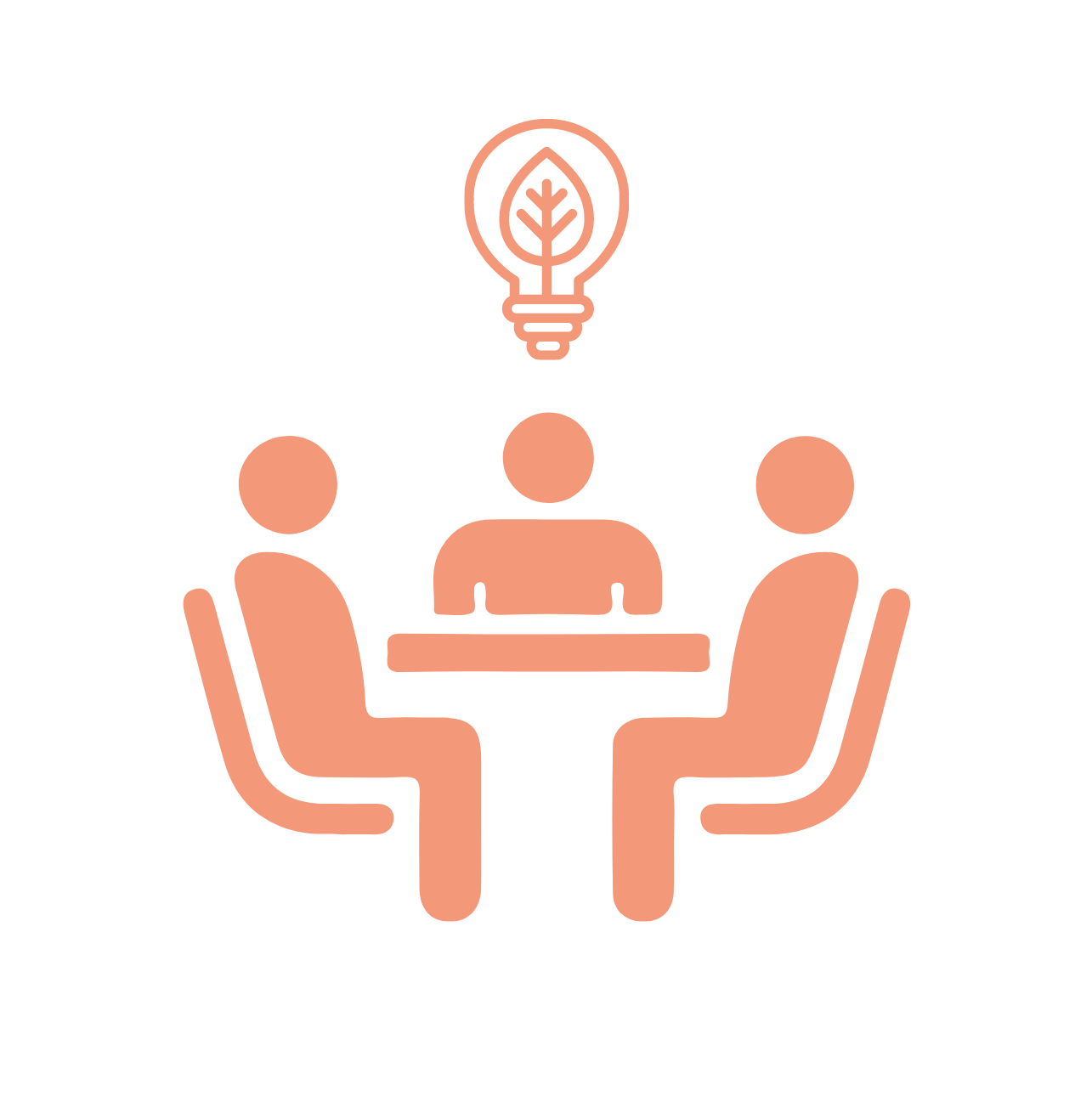
Educational Programs
Teaching Sustainability
START Metric #5:
Course Development Training
Ideas & Resources

This START metric focuses on equipping teachers with practical tools and strategies to seamlessly incorporate sustainability concepts into their existing curriculum. By participating in this training, educators can enhance their ability to connect classroom content to real-world environmental challenges and solutions, fostering critical thinking and problem-solving skills among students.
Rather than treating sustainability as a standalone topic, this approach encourages integration across various subjects and grade levels, making learning more relevant and engaging. Emphasizing regenerative practices, the training highlights ways to inspire students to actively participate in restoring and revitalizing the natural systems that support all life on Earth.
Investing in teacher training not only enriches classroom instruction but also cultivates a school culture that values sustainability and empowers students to contribute positively to their communities and the environment.

Strategies for Course Development Training in Sustainability
NOTE: This is not a prescriptive list; it just offers ideas to inspire action and can be tailored to fit the unique needs of each school.
Organize Professional Development Workshops
Host workshops to introduce teachers to sustainability principles and practical ways to incorporate them into their curriculum.
Include hands-on activities, case studies, and lesson planning sessions to make the training interactive.
Provide Access to Sustainability Resources
Develop a library of teaching materials, such as lesson plans, textbooks, videos, and online tools, to support teachers.
Offer subject-specific resources to help teachers connect sustainability concepts to their areas of expertise.
Define Clear Learning Objectives
Work with teachers to identify sustainability-related learning objectives that align with existing standards and curriculum goals.
Ensure these objectives address practical applications of sustainability concepts relevant to students' lives and communities, while also highlighting the connection between local environmental issues and broader global challenges.
Use Peer Mentorship
Pair teachers experienced in integrating sustainability with those new to the concept for guidance and collaboration.
Use mentorship programs to share best practices and foster a supportive teaching community.
Offer Incentives for Participation
Provide stipends, recognition, or continuing education credits to teachers who complete sustainability training programs.
Use awards or public acknowledgment to celebrate teachers who innovate in sustainability education.
Incorporate Sustainability Across Subjects
Teach educators how to embed sustainability into diverse subjects, from STEM to arts and humanities.
Use interdisciplinary examples to show how sustainability connects to different areas of study.
Facilitate Collaboration Among Teachers
Encourage teachers to work together to develop interdisciplinary sustainability projects or units.
Use planning sessions to align sustainability content across grade levels and subjects.
Leverage Online Learning Platforms
Provide access to virtual courses, webinars, or e-learning modules on sustainability in education.
Use online platforms for ongoing professional development and as a repository for shared resources.
Partner with Sustainability Experts
Invite professionals, such as environmental scientists, urban planners, or community leaders, to lead training sessions.
Use their expertise to provide real-world insights and case studies.
Emphasize Hands-On and Experiential Learning
Train teachers in methods that engage students actively, such as project-based learning, fieldwork, or simulations.
Demonstrate how hands-on activities can make sustainability concepts more tangible and impactful.
‘Zoom in’ to Local, and ‘Zoom Out’ to Global Contexts
Teach educators how to use local issues, such as water conservation or urban planning, to make sustainability topics more relevant.
Encourage educators to explore how local environmental issues connect to broader global challenges. By examining sustainability topics through both local and global lenses, teachers can help students appreciate the interconnectedness of ecosystems and the shared responsibility in addressing environmental concerns.
Provide Ongoing Support
Offer follow-up coaching or check-ins to help teachers implement what they’ve learned.
Create a support network where teachers can share successes, challenges, and ideas.
Link Training to Measurable Outcomes
Use training sessions to help teachers develop measurable sustainability-related learning outcomes for their courses.
Provide tools for assessing these outcomes to track the effectiveness of integrated sustainability content.
Encourage Reflection and Feedback
Include time for teachers to reflect on how sustainability aligns with their personal teaching philosophies.
Gather feedback from participants to improve future training sessions and identify ongoing needs.
Showcase Exemplary Models
Highlight successful examples of sustainability integration from other schools or educators.
Use these models to inspire teachers and demonstrate practical applications.
Align with Institutional Goals
Connect course development training with the school’s broader sustainability goals and initiatives.
Ensure that teachers see how their efforts contribute to the school’s mission.
Use Data to Demonstrate Impact
Share data on how sustainability training improves student outcomes, such as critical thinking, problem-solving, or civic engagement.
Use these metrics to build support for continued investment in training programs.
Celebrate Teacher Achievements
Recognize teachers who successfully integrate sustainability into their courses through awards, showcases, or promotions.
Use these celebrations to inspire others and reinforce the importance of sustainability education.
Create a Sustainable Curriculum Development Team
Form a committee of teachers, administrators, and sustainability experts to guide ongoing curriculum integration efforts.
Use this team to ensure consistency and innovation in sustainability education.
Encourage a Long-Term Commitment
Emphasize that integrating sustainability into the curriculum is an ongoing process, not a one-time initiative.
Provide opportunities for teachers to deepen their knowledge and skills over time.
Resources
-

Learning Objectives for SDGs
From UNESCO, a guide to how education can achieve Sustainable Development Goals (SDGs), including learning objectives, suggested topics, earning activities, and implementations for each SDG.
-

Report: Educating for Sustainable Development
In spring 2023, the Smithsonian Science Education Center contracted with Gallup to conduct a study of U.S. K-12 teachers and school administrators, as well as teachers of students in comparable grade levels in four peer countries: Brazil, Canada, France and India. The goal was to gauge attitudes toward, and demand for, education and resources related to sustainable development.
-

NEED/The National Energy Education Development Project (USA)
NEED trains and assists teachers in harnessing the energy of the classroom – the energy of students. NEED offers curriculum resources, leadership training, and conferences/events for students and teachers, designed to engage and teach them about energy.
Schools hold the key to a healthy, sustainable and regenerative future.
Education equips learners with the knowledge, skills, and mindset to understand and respond to today’s environmental challenges and their impacts, and to help restore and regenerate the natural systems we depend on.
Schools can prepare students to think critically, act creatively, and contribute to a future where communities and ecosystems can thrive—now and for generations to come.
But how do we get there?But how do we get there?

START: Sustainability Tracking, Analytics & Roadmap Tool was created by schools, for schools, to help them develop comprehensive programs for step-by-step progress towards sustainability, regenerative practice, and student empowerment.
START provides a Roadmap for School Sustainability:
It breaks down school sustainability into clear actions (‘metrics’), such as Minimizing Waste, Reducing Greenhouse Gas Emissions, and supporting Sustainable Transportation options.
However, research shows it’s not enough for a school to simply reduce its environmental impact in its Physical Place (buildings & grounds).
Students and staff also need to learn about sustainability (Educational Programs), and practice it in day-to-day activities (Organizational Culture), because hands-on involvement fosters lasting habits and a deeper understanding of our shared responsibility for environmental stewardship.
How sustainable is our school now?
Schools use START to measure how sustainable they are now. A school’s START team investigates how their school currently operates to find their ‘sustainability baseline’ for each metric. For example, is our school a beginner, intermediate or advanced in sustainable water use? START enables schools to benchmark, track and visualize their current sustainability levels, as well as hard data around their waste, water, energy and greenhouse gas emissions.
Where should we go next, and how can we collaborate for success?
What do we need to do to ‘level up’ in each metric? Once schools have their baselines, START helps them to set goals and plan for progress. START provides a central hub for school members to collaborate, document, and plan their school’s sustainability journey.

START is a subscription-based Whole School Sustainability dashboard.
It requires at least one adult school member to create a school’s START account, but it will need a team (students, teachers and staff) to grow a Whole School Sustainability program.
Interested schools can sign up for a demo or apply to set up an account.
Learn more about START here, and consider sharing the brochure with your school.
Let’s create a better future, one school at a time.
Contact us at guides@greenschoolsalliance.org if you have a free resource to contribute or recommend that can help schools take action around this specific sustainability metric.






